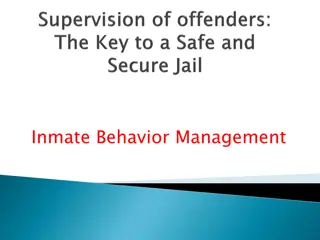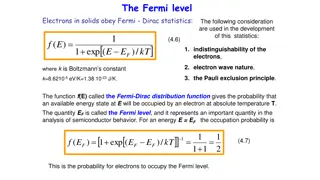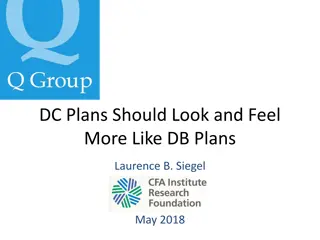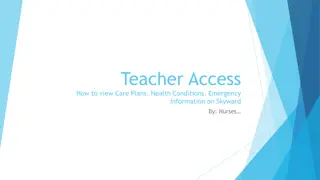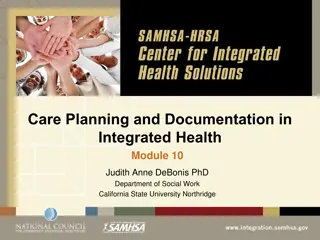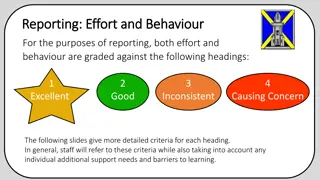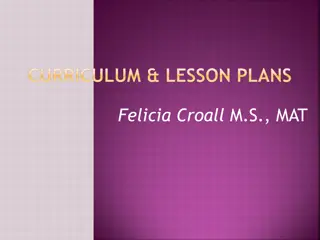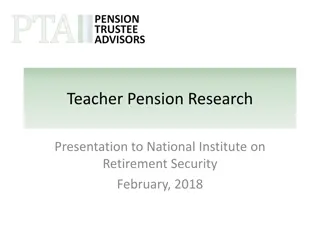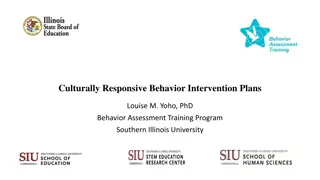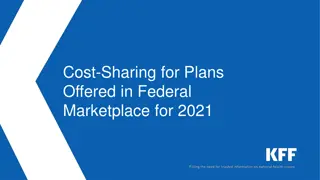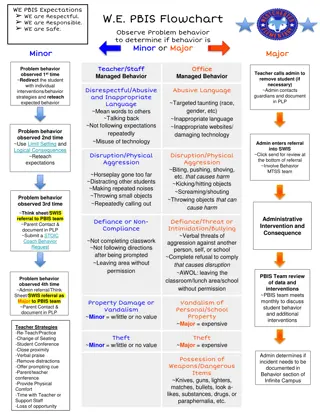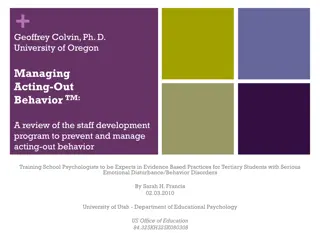Function-Based Behavior Support Plans: A Comprehensive Guide
Explore the process of developing Function-Based Behavior Support Plans (BSP) using Functional Behavioral Assessment (FBA). Understand the concepts of function and functional behavior assessment, learn how FBA/BSP fits within a multi-tiered support system, and practice developing BSP for students. Discover a function-based approach focusing on environmental factors to address behavior challenges effectively. D.A.S.H method helps define behaviors, observe, and hypothesize reasons for behavior occurrence. Differentiate between simple and complex FBA and understand the team dynamics involved in developing behavior support plans.
Download Presentation

Please find below an Image/Link to download the presentation.
The content on the website is provided AS IS for your information and personal use only. It may not be sold, licensed, or shared on other websites without obtaining consent from the author. Download presentation by click this link. If you encounter any issues during the download, it is possible that the publisher has removed the file from their server.
E N D
Presentation Transcript
Basic FBA to BSP Using Functional Behavioral Assessment (FBA) to Develop Function-Based Behavior Support Plans (BSP) Adapted from Sheldon Loman and others Day One
Learning Objectives Day One: Understand the concepts of function and functional behavior assessment Consider how FBA/BSP fits within a multi-tiered system of supports Learn the FBA process and practice with selected student Day Two: Develop a BSP for selected student Plan for implementing FBA/BSP within your multi-tiered system
Materials www.pbisvermont.org Introduction and Practice in Functional Behavior Assessment and Behavior Support Planning (FBA/BSP) From FBA to BSP Planning Workbook
Whats the function of this behavior? http://www.youtube.com/watch?v=hkKOqij_Tdw
Function Based Approach Focuses on: Changing environmental factors instead of fixing the person. It s about what we as adults will do differently!
D.A.S.H. Define behavior in observable and measurable terms Ask about behavior by interviewing staff and student specify routines where & when behavior occurs summarize where, when, and why behavior occurs See the behavior observe the behavior during routines specified observe to verify summary from interviews Hypothesize a final summary of where, when, and why behaviors occur
Simple vs Complex FBA SIMPLE COMPLEX Students that demonstrate high frequency behaviors that are not dangerous, have received interventions that did not improve behavior, show behaviors in only 1-2 settings Students that demonstrate dangerous behaviors or show behaviors that occur in 3 or more school settings FOR Relatively simple and efficient process to guide behavior support planning Time-intensive process that involves emergency planning, family-centered planning, and collaboration with outside agencies WHAT Team of school-based personnel (ex: teachers, special educator, counselor, administrator, behavior support personnel) School-based team, including professionals trained to develop and implement intensive interventions for students with severe problem behaviors (ex: behavior specialist or school psychologist) DEVELOPED BY WHOM
How Does the Functional Approach Fit Into Your School s Multi-Tiered System of Supports?
Six Components of Universal 1. Purpose Statement 2. 3-5 Expectations 3. System for Teaching Expectations 4. System for Acknowledging Expectations 5. System for Discouraging Problem Behavior 6. Data-based Decision Making
Targeted Interventions Implement Universal with Fidelity Inventory Existing Targeted Practices Develop Intervention ie. Check-in/Check-out Develop Data System to Support Targeted Interventions
Examples: Targeted Group Interventions Based on Functions of Behavior Access Adult Attention/Support: Check-In/Check-Out Adult Mentoring Programs Access Peer Attention/Support: Social Skills Instruction Peer Mentoring Self-Monitoring with Peer Support (function: academic task escape) Academic Skills Support: Organization/Homewo rk planning support Homework completion club Tutoring
INTENSIVE LEVEL Establish Intensive Team Establish SU Supports for the Intensive Level Establish SU and interagency Develop Capacity for Wraparound Supports
Who is Responsible for Conducting FBA/BSP in Your School? How does someone access this FBA/BSP?
Requesting an FBA Teachers & school teams should be able to identify the system for requesting assistance Teachers should be able to identify who to access assistance from The targeted team (EST) will determine when an FBA/BSP referral is necessary based on data
ACTIVITY 1: Using the questions in the workbook, review/develop your school s process for accessing an FBA/BSP
D.A.S.H. Define behavior in observable and measurable terms Ask about behavior by interviewing staff and student specify routines where & when behavior occurs summarize where, when, and why behavior occurs See the behavior observe the behavior during routines specified observe to verify summary from interviews Hypothesize a final summary of where, when, and why behaviors occur
Defining and Understanding Behavior
Always Start by Defining the Problem Behavior (ABC s) 3 2 1 Consequence/Functio n Antecedents/Trigger s Behavior: ..and as a result ______ the student does (what)__ When _____happens .
Defining Observable Behaviors Definitions of behaviors need to be: * Observable: The behavior is an action that can be seen * Measurable: The behavior can be counted or timed * Defined so clearly: that a person unfamiliar with the student could recognize the behavior without any doubts!
Examples and Non-Examples NON-OBSERVABLE / MEASURABLE OBSERVABLE / MEASURABLE Disruptive behaviors Talks when teacher is lecturing, calling out in a loud voice, singing Off-task behaviors Draws pictures during group work time Angry, Hostile Behaviors Throwing objects, Kicking over chairs Inappropriate language Calls peers names Attention problems Tapping/ drumming on desk, looking around the classroom Non-compliance Refusal to do work, failure to follow directions Yells No or You can t make me when given direction Defiance
Are these observable & measurable? Gets out of desk and hits other students Has separation anxiety (from parent) Spacey Reads 120 wpm Says she hears voices Emotionally disturbed Doesn t like classmates
Defining Behavior Tips: 1) What does the behavior look like? Talking out: Any verbalization made by the student that was not initiated by the teacher and/or distracts others from the assigned tasks in the classroom 2) Provide Examples and Non-Examples of the Problem Behavior Examples of Talking Out: Answering a question the teacher asks of a different student Non-examples of Talking Out: Answering a question the teacher asks of the student
ACTIVITY 2: A) Using your workbook, provide an observable & measurable definition for these behaviors: Jeff is always disruptive in class Hailey is constantly off-task during math Chris is defiant Brandon is angry and hostile Alexis uses inappropriate language B) Provide an observable and measurable definition of your student s behavior
D.A.S.H. Define behavior in observable and measurable terms Ask about behavior by interviewing staff and student specify routines where & when behavior occurs summarize where, when, and why behavior occurs See the behavior observe the behavior during routines specified observe to verify summary from interviews Hypothesize a final summary of where, when, and why behaviors occur
Asking About When, Where, and Why the Behavior Occurs
Once you have defined the problem behavior THEN: Where & When does the behavior occur? 3 2 1 Consequence/Functio n Antecedents/Trigger s Behavior: ..and as a result ______ the student does (what)__ When _____happens .
WHERE and WHEN Does the Problem Behavior Occur? WHERE = Routines where the problem behavior is most likely Examples: during math class, gym, lunch, recess WHEN = Specific events (or antecedents) within a routine that trigger the problem behavior Examples: when given double-digit addition, given directions
Identifying Antecedent Triggers Identify the event, action, or object that occurs right before the problem behavior (When ) Signals the behavior Sets it off (trigger) Identify the ANTECEDENT in these examples: At the lunch table, when told to shut up by a peer, Ben hits the student In language arts class, when asked to read aloud in class, Tracy gets up and tells jokes During circle time, when praised Jessie starts crying
ACTIVITY 3: Using your workbook, identify the behavior and antecedent in the scenarios
Scenario #1 During passing period in the hallway before recess, when peers tease him about his walk, A.J. calls them names and hits them. Routine: During __________________________ Passing Period before Recess Antecedent When When When Antecedent Behavior The student... The student... CALLS NAMES & HITS PEERS TEASE ABOUT HIS WALK
Scenario #2 In math class, Bea stares off into space and does not respond to teacher directions when she is given a difficult math problem. Math Class Routine: During________________ Antecedent Behavior The student When When GIVEN A DIFFICULT MATH PROBLEM STARES & DOES NOT RESPOND TO DIRECTIONS
Once you have defined the behavior (the What) & know Where & When the behavior occurs Then: What is the CONSEQUENCE? (What happens after or as a result of the behavior?) 2 1 3 Routines/Antecedents: Behavior: Consequence/Outcome When _____happens . the student does (what)__ ..and as a result ______
Consequence: Determine What Happens Right After the Behavior It may help to think: and as a result ______________ Example (Antecedent Behavior Consequence) During recess, when peers tease him, Ben hits his peers and they leave him alone. During reading, When asked to read aloud Tracy tells jokes, the other students laugh, and she is sent to the office (missing the assignment) During circle time, when praised Jessie starts crying, the teacher stops circle time and comforts her
ACTIVITY 4: A) Using your workbook, identify the behavior, routine, antecedent, and consequence in the scenarios B) Identify the ABC s of your student s behavior
Scenario #1 Joe throws his pencil and rips his paper during math whenever he is given double-digit math problems. This results in him getting sent to the office. Routine: During ________________ Math class Antecedent/Trigger: When.. Behavior: Student does.. Consequence/Outcome: and as a result Given double-digit math problems Throws pencil & rips paper Sent to the office
Scenario #2 Nancy cries during reading time when she is asked to work by herself. This results in the teacher sitting and reading with her. Routine: During ________________ Reading Antecedent/Trigger: When Behavior: Student does.. Consequence/Outcome: and as a result... Asked to work by herself The teacher sits & reads with her Cries
Once you have identified the ABCs Then: You need to understand the FUNCTION or WHY the behavior occurs 2 1 3 Routines/Antecedents: Behavior: Consequence/Outcome When _____happens . the student does (what)__ ..and as a result ______ Function is _________
Functions ofBehavior Problem Behavior Escape/ Avoid Something Obtain/Get Something Stimulation/ Sensory Tangible/ Activity Social Adult Peer
Most Common Functions of Behavior To Avoid/ Escape: To Obtain/ Get : Difficult Task Peer attention Boring Task Adult attention Easy Task Desired activity Physical demand Desired object/ items Non-preferred activity Sensory stimulation: auditory, Peer attention tactile, etc. Staff attention Reprimands
Examples of Function in School Obtain/Get Reinforcers I yell and others look at me I fight and others listen to me I wander and people talk to me I hit in order to get toys from other kids Escape/Avoid Aversives I cry when work gets hard and the teacher tells me to take a time out I throw a book during math class and the teacher will remove me from class I stand out of the way during PE and the other game participants will avoid throwing me the ball.
Understanding FUNCTION: WHY? What maintains the behavior? Use information about the routine, antecedent, behavior, & consequence to determine that the function of the behavior is either to: -Get or Avoid something in the environment Routine: During ________________ Consequence/Outcome: and as a result __________ Behavior: Student does _________ Antecedent/Trigger: When _________ Therefore, the function of the behavior is to: get/avoid ____________
What is the Function of Jane s Behavior? Jane, a fifth grade student, was referred for disruptive behavior to the student support team by her teacher, Mrs. O Neil. After interviewing Mrs. O Neil and conducting several observations of Jane in the classroom, the team determined that during transitions (from lunch, recess, dismissal) in the hallway when staff are present, she shouts profanities. Then, adults spend time talking with her about her behavior.
Janes Summary Statement Routine: During ________________ Transitions Antecedent/Trigger: When .. Behavior: Student.. Shouts profanities Consequence/Outcome: and as a result... Staff are present Adults talk to her Therefore, the function of the behavior is to: get/avoid Attention from Adults Adult Attention is what maintains the behavior!!
ACTIVITY 5: Using your workbook, identify the behavior, routine, antecedent, and consequence in the scenario and for your student Use this information to determine the most likely FUNCTION of the problem behavior
Scenario #1 When asked to sit with to his peers in morning circle, Mike pulls the hair of the girl sitting next to him. The teacher tells Mike to go back and sit at his desk. Routine: During ________________ Morning Circle Consequence/Outcome: and as a result Sent to sit at desk Antecedent/Trigger: When Behavior: Student does Therefore, the function of the behavior is to: get/avoid Asked to sit with peers Pulls hair of girl next to him Sitting at morning circle
Scenario #3 From the video you just watched on Shane . Routine: During ________________ Consequence/Outcome: and as a result Antecedent/Trigger: When Behavior: Student does.. Therefore, the function of the behavior is to: get/avoid 52
After we defined the behavior (the What) & know Where & When & Why the behavior occurs Then:We ask: Are there any events that happen outside of the routine that SET UP the behavior (make it more likely to occur)? 1 4 2 3 Antecedents/ Triggers Behavior Setting Events Consequence and Function
Setting Events Events, removed from the immediate situation, that have an impact on the student s behavior Things that, when a trigger is present, increases the chances that the problem behavior will occur Examples: lack of sleep, illness, change in routines, trauma, argument at home the night before, bullying, etc.





